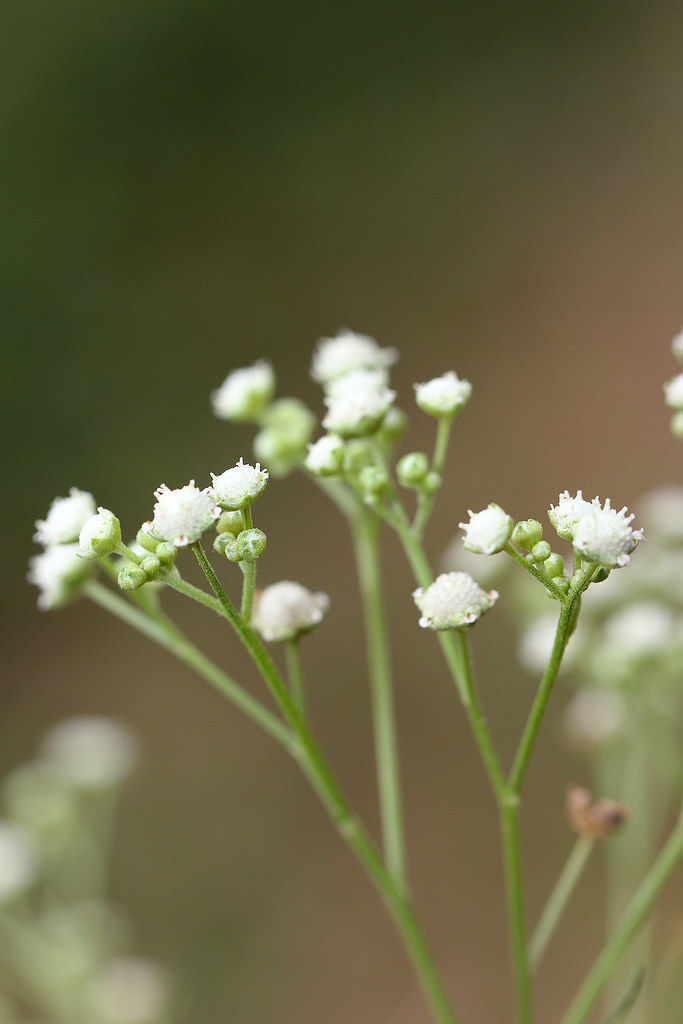Invasive weed could increase malaria incidents in East Africa
29.09.2015: A highly aggressive invasive weed known scientifically as Parthenium hysterophorus, and within the region as famine weed, could increase malaria incidents in East Africa.
This is because Parthenium has the ability to sustain the malaria-transmitting mosquito,Anopheles gambiae, by extending its life even in the absence of a blood meal, according to a study by the International Centre of Insect Physiology and Ecology (icipe) and partners, published recently in the journal PLoS ONE.
A native of North and South America, Parthenium is considered one of the world’s most serious among invasive plants (that is, those that are able to thrive and spread aggressively outside their original geographical areas). The success of Parthenium as an invasive weed is based on its huge ability to adapt to harsh environmental conditions. In addition, the weed grows very fast, and is able to store large amounts of seeds in the soil. Its seeds are also small and light and can be transported by a variety of mediums over long distances. In East Africa, Partheniumis extensively spread over cultivated and pastoral lands, including malaria-endemic zones, where it has become one of the plants that Anopheles mosquitoes prefer to feed on.
As Prof. Baldwyn Torto, icipe scientist and lead study author explains, Parthenium has raised considerable concern among governments and scientific agencies in East Africa and beyond, mainly because of its negative effects on people and livestock, agriculture and the environment. In particular, the weed produces a highly toxic compound called parthenin, which can cause dermatitis, hay fever and asthma in people. Parthenin is poisonous to livestock, and it also contaminates milk and meat in animals that have fed on it.
The icipe study, which investigated the impact of Parthenium and parthenin on the survival and energy reserves of An. gambiae, is the first to introduce the connection between the weed, mosquitoes and malaria incidents.
“The success of mosquitoes in transmitting diseases depends on how long they survive, their ability to find a variety of hosts to feed on, and how well the insects support the development of infectious agents in them. In particular, feeding on sugars (such as nectar and honeydew), which mosquitoes forage from plants, enhances their lifespan, and also provides them with energy to fly,” notes Prof. Torto.
“Our results show that when female Anopheles mosquitoes feed on Parthenium, they survive much longer, and they also accumulate substantial energy reserves. Specifically, the mosquitoes are able to store lipids, the most efficient form of energy that has high caloric value and is critical in a variety of functions in the insects. For instance, lipids have been implicated in the development of embryos in mosquitoes and therefore their ability to reproduce,” says Prof. Torto.
Significantly, the researchers also found that parthenin did not have the same toxic effect on mosquitoes as it does on people and animals, indicating that An. gambiae females can tolerate, and possibly even detoxify themselves of the compound. The scientists are now evaluating the impact of parthenin on mosquitoes infected with the malaria parasite.
“Our findings point to an urgent need for focused efforts to curb the spread of P. hysterophorus, especially in malaria endemic areas. The results also indicate the possible existence of disease vector species that are resilient and capable of tolerating certain cell-killing substances in the environment, including highly toxic poisons such as those produced by invasive plants. Further research is required regarding such species so as to design appropriate control strategies for them,” Prof. Torto observes.
He concludes that, since invasive plants like Parthenium can suppress or even replace other species that are less suitable for disease vectors, their spread could lead to higher disease transmission. The icipe study, therefore, opens new dimensions in the research and control strategies of invasive plants, towards the largely unexplored area of their effects on human health through interactions with disease-transmitting vectors. Such knowledge will be useful in creating risk-analysis models of invasive plants in relation to vector-borne diseases and associated public health issues.
Notes for Editors
Research Details
- Publication: Nyasembe VO, Cheseto X, Kaplan F, Foster WA, Teal PEA, Tumlinson JH, Borgemeister C. and Torto B. (2015) The Invasive American Weed Parthenium hysterophorus Can Negatively Impact Malaria Control in Africa. PLoS ONE 10(9): e0137836. doi:10.1371/journal.pone.0137836.
Available at: http://journals.plos.org/plosone/article?id=10.1371/journal.pone.0137836
- Research Partners: Center for Medical, Agricultural, and Veterinary Entomology, U.S. Department of Agriculture–Agricultural Research Service; Department of Evolution, Ecology and Organismal Biology, The Ohio State University; Center for Chemical Ecology, Department of Entomology, Pennsylvania State University.
- Funding: This study was funded by the United States Department of Agriculture (USDA) and the US National Institutes of Health / National Institute of Allergy and Infectious Diseases (NIH/NIAID).
- Corresponding author: Prof Baldwyn Torto, Tel: +254 20 8632000; Email: btorto@icipe.org
Media Contacts
- Liz Ng’ang’a, Communications Unit, icipe, Lnganga@icipe.org


